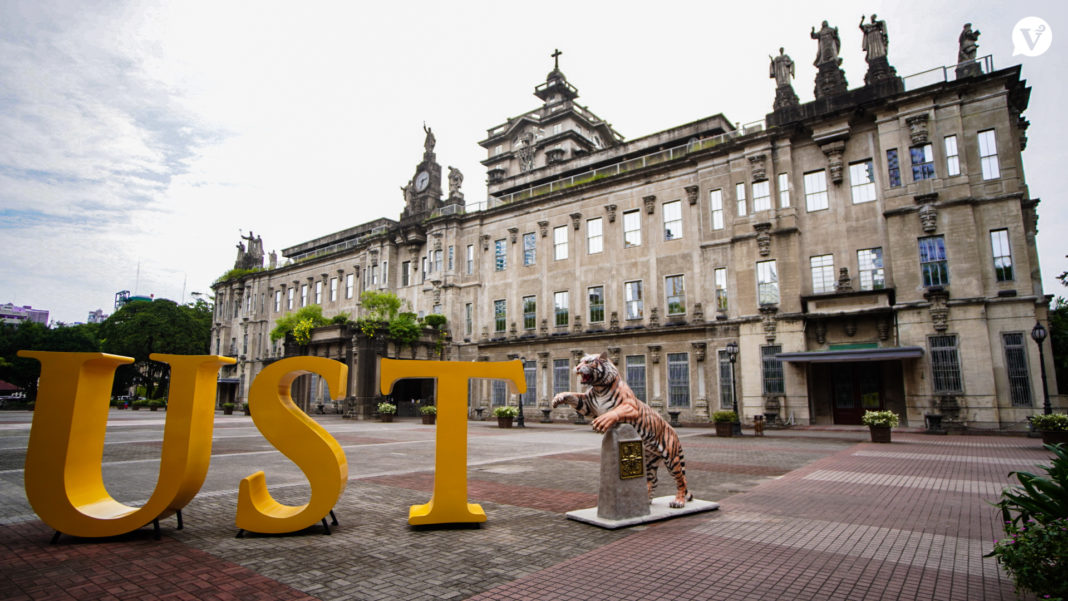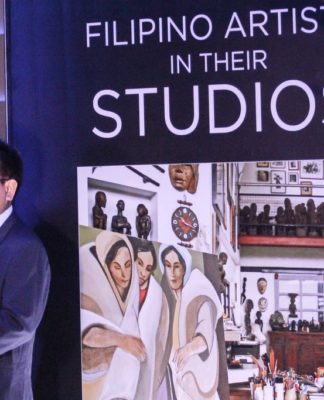UST WILL continue hybrid classes, aligning with the administration’s “Vision 2024 and Beyond” post-pandemic recovery roadmap that aims to improve the University’s information and communications technology infrastructure.
In an email to the Varsitarian, Prof. Cheryl Peralta, the vice rector for academic affairs, stressed the University’s goal to “maximize” opportunities for incorporating emerging technology into the educational process.
“We continue to use the hybrid mode of instruction with academic units determining the most appropriate combination of online and onsite hours per course based on intended learning outcomes and compliant with minimum regulatory requirements for their programs,” Peralta said.
“We will continue to improve our implementation of hybrid instruction especially as we intend to maximize opportunities to integrate emerging technologies into teaching and learning,” she added.
In Academic Year 2023-2024, UST transitioned from Blackboard, its learning management system (LMS) for 20 years, to Canvas. Academic units were directed to assess the optimal blend of online and onsite hours for each course.
The Commission on Higher Education (CHEd) required colleges and universities to conduct a minimum of 50 percent of class hours onsite as pandemic restrictions were eased in November 2022.
At the beginning of the academic year, Peralta said the University would stick to hybrid learning “through the use of the UST Cloud Campus and other technology tools acquired by the University.”
When he assumed the rectorship in April 2021, Fr. Richard Ang, O.P. unveiled the Vision 2024 and Beyond roadmap, which he said was aimed at ensuring the University’s survival beyond the Covid-19 pandemic.
The plan calls for improving the University’s information technology infrastructure.
“Poor digital scales and connectivity issues remain to be roadblocks among most of our learners. We are aware of the importance of IT integration in education,” Ang said.
Ang is nearing the end of his four-year term but is eligible for re-election as rector.
Term 2 setup
For Term 2, three academic units are holding all classes onsite: the Faculty of Civil Law, the College of Architecture, and the College of Information and Computing Sciences.
The College of Nursing has adopted a fully face-to-face instruction method for professional and laboratory courses, while general education subjects follow a 50-50 blend of onsite and online hours.
The Conservatory of Music is delivering all learning hours onsite for professional courses, with general education subjects following a 90-percent onsite and 10-percent online distribution.
The Faculty of Pharmacy has also implemented a 90-10 distribution across all its courses and programs.
The College of Science and the College of Tourism and Hospitality Management have structured their Term 2 classes with an 80-percent in-person and 20-percent virtual format.
The Faculty of Medicine and Surgery, Faculty of Engineering, College of Commerce and Business Administration, and the Graduate School have adopted a 70-30 distribution of learning hours.
Professional courses at the Faculty of Arts and Letters follow a 70-30 scheme, with a majority of learning hours dedicated to onsite instruction. General education courses may still follow a 50-50 blend of onsite and online delivery.
The College of Rehabilitation Sciences has tasked program heads to determine their optimum blend of learning provided that a minimum 50 percent of class hours would be dedicated to onsite delivery.
At the College of Education, lecture classes have a 50-50 mix, while laboratory sessions have an 80-percent in-person and 20-percent virtual distribution.
The UST-Alfredo M. Velayo College of Accountancy is implementing a 50-50 percent blend of learning hours. Ernest Martin G. Tuazon with reports from Hannah Joyce V. Andaya, Mabel Anne B. Cardinez, Fernando Pierre Marcel B. Dela Cruz, Mikhail S. Orozco, Jeremy R. Edera, and Liam Sebastian C. Sanchez

















